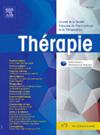从 20 世纪 90 年代初的首批试点倡议到 20 世纪 20 年代的 OSIAP 全国调查:30 多年来对法国药物转用现象的洞察。
IF 1.8
4区 医学
Q3 PHARMACOLOGY & PHARMACY
引用次数: 0
摘要
本文旨在追溯作为法国药物滥用监控系统工具箱一部分的法国伪造处方监控工作的发展历程。文章研究了自 2001 年起在全国范围内开展的 OSIAP 调查(可能滥用的可疑处方指标)的起源,该调查于 20 世纪 90 年代初创立,并研究了其发展情况,直至目前持续确认的逐年增长趋势。要了解 OSIAP 和其他一些戒毒工具的诞生和发展历程(这些工具在 30 多年后仍然有用),需要回顾一些重要的历史基准,包括前法国国家麻醉品和精神药物委员会的原则和使命。尽管 OSIAP 调查是毒瘾警戒网络以多维方法开发和例行探索的特定工具箱的一部分,但它也是唯一的数据来源,发现了一些有问题的药物使用情况,如法国早期发现的托吡卡胺滴眼液滥用或 2017 年 7 月后可待因止咳糖浆的转移。然而,从这一数据来源获得的调查结果应与其他补充来源进行核对。法国应保持对伪造处方的密切监测,最近的演变为这项调查提供了支持。OSIAP 调查中记录的虚假处方不断增加,究竟是由于虚假处方的绝对数量增加,还是由于药剂师的警惕性随着时间的推移而提高,目前仍有待确定。不过,这些伪造现象的加速也与远程会诊的部署和数字技术的民主化(如复制处方或生成虚假二维码)相一致。未来,伪造技术很可能会再次演变,可能会适应更严格的要求,如实施非物质化处方。本文章由计算机程序翻译,如有差异,请以英文原文为准。
From the first pilot initiatives in the early 1990s to the national OSIAP survey in the 2020s: More than 30 years of insight in medication diversion phenomenon in France
This article proposes to trace back the timeline of the monitoring of falsified medical prescriptions in France as part of the French Addictovigilance System's toolbox. It examines the genesis of the OSIAP survey (Suspect Prescriptions Indicator of Possible Abuse), which has been held at the national level since 2001 but was created in the early 1990s, and its development until the current situation with a continuously confirmed yearly increasing trend. Understanding the birth and development of OSIAP and some other Addictovigilance tools that continue to be useful after more than 30 years of existence requires to review key historical benchmarks including the principles and missions of the former French National Commission on Narcotic and Psychotropic Drugs. Even though the OSIAP survey is part of a specific toolbox developed and routinely explored by the Addictovigilance network in a multidimensional approach, it has also been the sole data source, which identified some problematic drug uses, such as the early detection of tropicamide eye drop misuse in France or the diversion of codeine cough syrups after July 2017. Nevertheless, findings obtained from this data source should be checked against other complementary sources. Close monitoring of falsified prescriptions should be maintained in France, and the recent evolutions are plaid for supporting this survey. It is still being determined whether the constant increase of false prescription forms recorded in the OSIAP survey results from an increase in the absolute number of falsified prescriptions or whether pharmacists have become more vigilant with time. Still, the acceleration of these falsifications is also in line with the deployment of teleconsultations and the democratisation of digital techniques such as copying prescriptions or generating false QR codes. The forging techniques will likely evolve again in the future, possibly by adapting to stricter requirements such as the implementation of dematerialised prescriptions.
求助全文
通过发布文献求助,成功后即可免费获取论文全文。
去求助
来源期刊

Therapie
医学-药学
CiteScore
3.50
自引率
7.70%
发文量
132
审稿时长
57 days
期刊介绍:
Thérapie is a peer-reviewed journal devoted to Clinical Pharmacology, Therapeutics, Pharmacokinetics, Pharmacovigilance, Addictovigilance, Social Pharmacology, Pharmacoepidemiology, Pharmacoeconomics and Evidence-Based-Medicine. Thérapie publishes in French or in English original articles, general reviews, letters to the editor reporting original findings, correspondence relating to articles or letters published in the Journal, short articles, editorials on up-to-date topics, Pharmacovigilance or Addictovigilance reports that follow the French "guidelines" concerning good practice in pharmacovigilance publications. The journal also publishes thematic issues on topical subject.
The journal is indexed in the main international data bases and notably in: Biosis Previews/Biological Abstracts, Embase/Excerpta Medica, Medline/Index Medicus, Science Citation Index.
 求助内容:
求助内容: 应助结果提醒方式:
应助结果提醒方式:


